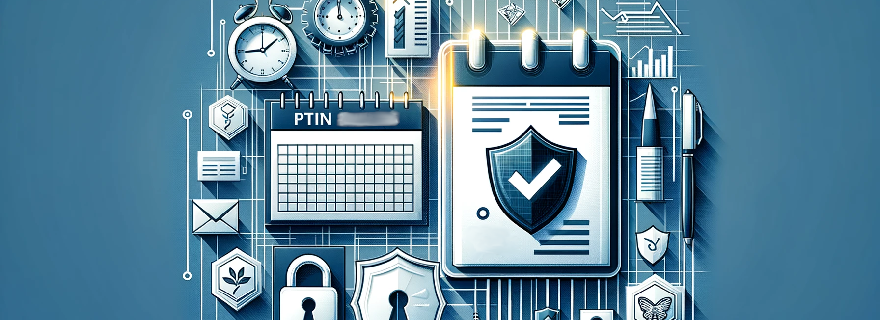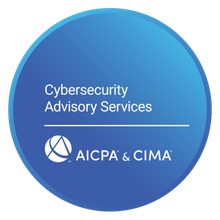PTIN Renewal and Cybersecurity: What Tax Pros Need to Know
As a tax professional, it's essential to stay up-to-date with the latest requirements and regulations in the industry. One critical aspect of this is renewing your Preparer Tax Identification Number (PTIN) each year. However, PTIN renewal is just the tip of the iceberg when it comes to compliance for tax professionals. In today's digital age, cybersecurity is more critical than ever, and tax professionals are no exception. In fact, the IRS requires tax professionals to implement specific cybersecurity measures to safeguard sensitive client information. In this article, we'll explore the cybersecurity requirements tax professionals must follow, including the importance of a Written Information Security Plan (WISP) and regular risk assessments. By following these guidelines, tax professionals can keep their clients' information secure and stay compliant with federal law.
PTIN Renewal
Preparer Tax Identification Number (PTIN) is a unique identification number assigned by the IRS to tax professionals who prepare tax returns. All tax professionals who prepare tax returns for compensation must obtain a PTIN and renew it annually. The renewal period usually starts in October and ends on December 31 of each year.
Renewing your PTIN is critical because without it, you won't be able to legally prepare and file tax returns for clients. In addition, failing to renew your PTIN on time can result in penalties and possible disciplinary action. Therefore, it's essential to keep track of the renewal deadline and renew your PTIN before the deadline.
To renew your PTIN, you can do so online or by filling out Form W-12, IRS Paid Preparer Tax Identification Number (PTIN) Application and Renewal, and mailing it to the IRS. It's important to note that the IRS charges a fee to renew your PTIN.
In addition to renewing your PTIN, it's essential to ensure that you meet the cybersecurity requirements set forth by the IRS. Failure to do so can result in severe penalties, including fines, legal action, and loss of business. In the next section, we'll discuss the cybersecurity requirements for tax professionals in more detail.
Cybersecurity Requirements for Tax Professionals
As a tax professional, you handle sensitive client information, including names, Social Security numbers, income information, and other personal and financial details. Therefore, it's crucial to have a robust cybersecurity system in place to protect this information from cyber threats.
The IRS has set forth specific requirements that tax professionals must follow to safeguard client information. These requirements include:
-
Implementing a Written Information Security Plan (WISP): A WISP is a comprehensive document that outlines your firm's cybersecurity policies and procedures. It should cover everything from password management to data encryption to disaster recovery. Having a WISP in place is essential because it shows that you have taken steps to protect client information and comply with federal law.
-
Conducting regular risk assessments: A risk assessment involves identifying and analyzing potential cybersecurity risks to your firm and taking steps to mitigate them. This can include everything from installing firewalls and antivirus software to training employees on how to spot phishing emails. Conducting regular risk assessments can help you stay one step ahead of cyber threats and protect your clients' sensitive information.
-
Keeping up-to-date with the latest cybersecurity trends and threats: Cyber threats are constantly evolving, and it's essential to stay up-to-date with the latest trends and threats. This includes regularly monitoring IRS guidance on cybersecurity and attending training sessions and webinars to stay informed.
-
Reporting any cybersecurity incidents to the IRS: If your firm experiences a cybersecurity incident, such as a data breach or a cyber attack, you must report it to the IRS immediately. Failure to do so can result in severe penalties and legal action.
By following these cybersecurity requirements, tax professionals can protect their clients' sensitive information and comply with federal law. In the next section, we'll discuss how to implement a Written Information Security Plan (WISP) for your firm.
Implementing a Written Information Security Plan (WISP)
A Written Information Security Plan (WISP) is a comprehensive document that outlines your firm's cybersecurity policies and procedures. It should cover everything from password management to data encryption to disaster recovery. Having a WISP in place is essential because it shows that you have taken steps to protect client information and comply with federal law.
Here are some steps to consider when implementing a WISP:
-
Identify potential cybersecurity risks: Identify the sensitive data your firm handles and where it's stored, as well as the potential cybersecurity risks to that data.
-
Develop policies and procedures: Develop policies and procedures to protect sensitive data and mitigate cybersecurity risks. This can include everything from password policies to data backup and recovery procedures.
-
Train employees: Train all employees on the policies and procedures outlined in the WISP, as well as cybersecurity best practices, such as how to spot phishing emails and how to create strong passwords.
-
Monitor and review: Regularly monitor and review your WISP to ensure it remains effective and up-to-date with the latest cybersecurity threats and trends.
-
Update the WISP as needed: Make updates to the WISP as needed to reflect changes in your firm's operations, the types of data you handle, and new cybersecurity threats and trends.
Implementing a WISP can seem overwhelming, but it's essential to protect your clients' sensitive information and comply with federal law. Consider seeking guidance from cybersecurity experts or attending training sessions and webinars to ensure your WISP is effective and up-to-date.
Renewing your PTIN is just the first step in compliance for tax professionals. To protect your clients' sensitive information and comply with federal law, it's crucial to have a robust cybersecurity system in place, including a Written Information Security Plan (WISP) and regular risk assessments. By following these guidelines, tax professionals can keep their clients' information secure and stay compliant with federal law.
Consequences of Non-Compliance
The consequences of non-compliance with IRS cybersecurity requirements can be severe. Not only can it result in financial losses for your firm and your clients, but it can also damage your reputation and lead to legal action. Here are some of the potential consequences of non-compliance:
-
Financial penalties: The IRS can impose significant financial penalties on tax professionals who fail to comply with cybersecurity requirements. These penalties can range from $10,000 to $100,000 per violation.
-
Legal action: Non-compliance can also result in legal action, including lawsuits from clients who suffer financial losses due to a data breach or cyber attack.
-
Damage to reputation: A data breach or cyber attack can damage your firm's reputation and erode client trust, potentially leading to the loss of clients and revenue.
-
Loss of license: In severe cases of non-compliance, the IRS may revoke your PTIN or your license to practice as a tax professional.
In addition to these consequences, non-compliance with IRS cybersecurity requirements can also result in significant costs associated with remediation, including legal fees, IT consulting fees, and notification costs.
To avoid these consequences, it's essential to take cybersecurity seriously and comply with IRS requirements. By implementing a WISP, conducting regular risk assessments, staying up-to-date with the latest cybersecurity trends and threats, and reporting any incidents to the IRS immediately, tax professionals can protect their clients' sensitive information and stay compliant with federal law.
In the next section, we'll discuss some best practices for tax professionals to follow to enhance their cybersecurity posture.
Best Practices for Tax Professionals
Implementing a WISP and complying with IRS cybersecurity requirements are crucial for tax professionals, but there are additional steps you can take to enhance your cybersecurity posture. Here are some best practices to consider:
-
Use strong passwords and two-factor authentication: Ensure that all employees use strong passwords and enable two-factor authentication wherever possible to protect sensitive data.
-
Encrypt sensitive data: Use encryption to protect sensitive data both in transit and at rest. This can include email encryption, file encryption, and database encryption.
-
Implement access controls: Use access controls to limit employee access to sensitive data based on their job responsibilities. This can include role-based access controls and least privilege access.
-
Regularly update software and systems: Keep all software and systems up-to-date with the latest security patches and updates to reduce the risk of vulnerabilities.
-
Conduct regular employee training: Provide regular training to all employees on cybersecurity best practices, including how to spot phishing emails and how to report security incidents.
-
Conduct regular risk assessments: Conduct regular risk assessments to identify potential vulnerabilities and address them before they can be exploited.
-
Have an incident response plan: Have an incident response plan in place to ensure that you can respond quickly and effectively in the event of a data breach or cyber attack.
By following these best practices, tax professionals can enhance their cybersecurity posture and protect their clients' sensitive information. It's important to remember that cybersecurity is an ongoing process, and staying vigilant and up-to-date with the latest threats and trends is essential for maintaining a strong cybersecurity posture.
Additional Resources
For tax professionals looking to learn more about PTIN renewal, IRS cybersecurity requirements, and best practices for enhancing their cybersecurity posture, there are several valuable resources available. Here are some links to additional resources that you may find useful:
-
IRS Publication 4557 - Safeguarding Taxpayer Data: A Guide for Your Business This publication provides guidance to tax professionals on the steps they can take to safeguard taxpayer data and comply with IRS cybersecurity requirements.
-
IRS Publication 5293 - Data Security Resource Guide for Tax Professionals This publication provides a comprehensive overview of the security threats that tax professionals face and provides guidance on how to protect their clients' data.
-
IRS Cybersecurity Awareness Tax Tips - The IRS offers a series of tax tips to help tax professionals stay up-to-date on the latest cybersecurity threats and trends.
-
National Institute of Standards and Technology (NIST) Cybersecurity Framework - The NIST Cybersecurity Framework provides guidance on how organizations can manage and reduce cybersecurity risk.
-
Cybersecurity and Infrastructure Security Agency (CISA) - CISA provides resources and guidance on how to protect critical infrastructure and information systems from cybersecurity threats.
By utilizing these resources, tax professionals can stay informed about the latest cybersecurity threats and best practices, and take the necessary steps to protect their clients' sensitive information.
Protecting Sensitive Taxpayer Data is Crucial for Tax Professionals
As a tax professional, protecting your clients' sensitive information is not only important for compliance with federal law, but it is also crucial for maintaining the trust of your clients. By renewing your PTIN, implementing a WISP, complying with IRS cybersecurity requirements, and following best practices for enhancing your cybersecurity posture, you can take important steps to safeguard your clients' sensitive information.
While the threat of cyber attacks and data breaches is ever-present, by staying informed about the latest threats and trends, and taking proactive steps to protect sensitive information, tax professionals can help ensure that their clients' information remains secure.
As you move forward in your tax preparation practice, remember that cybersecurity is an ongoing process, and staying vigilant and up-to-date with the latest threats and best practices is essential for maintaining a strong cybersecurity posture. By doing so, you can protect your clients' sensitive information, maintain compliance with federal law, and help ensure the continued success of your practice. Should you have any questions, you can always book a discovery call to speak with an IRS compliance specialist certified with the AICPA.






